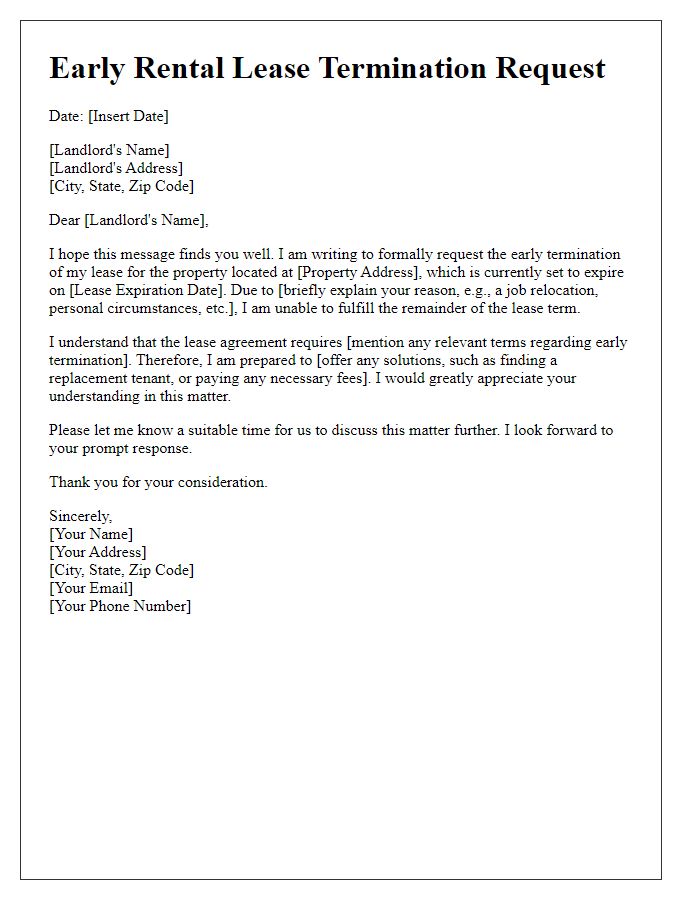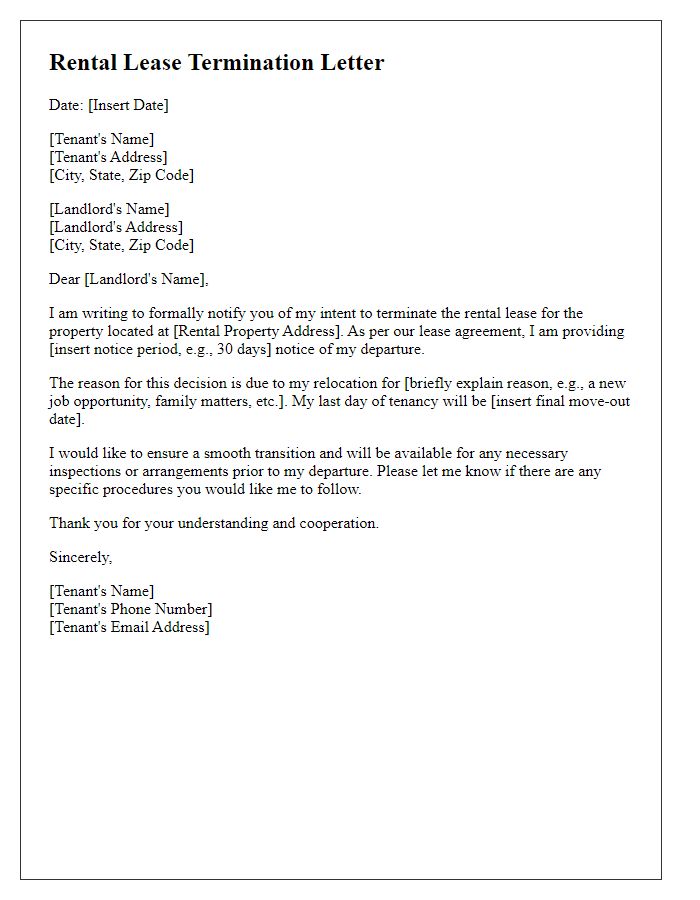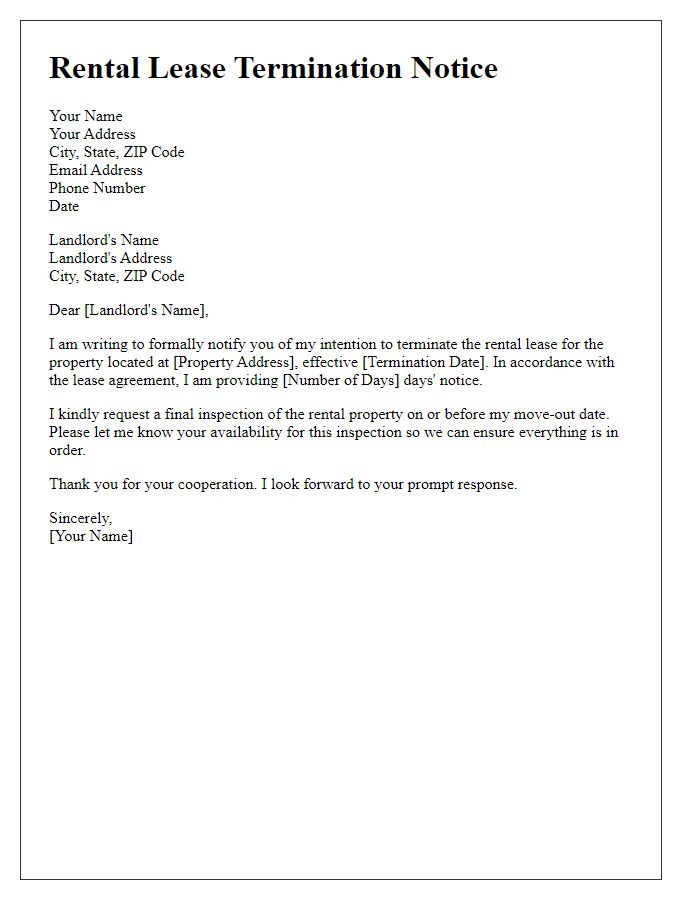Are you in the process of ending your rental agreement and looking for the right way to communicate this with your landlord? Writing a rental lease termination letter can feel daunting, but it's essential for ensuring a smooth transition. In this article, we'll provide you with a comprehensive template that simplifies the process and allows you to express your intentions clearly. So, let's dive in and explore how to create the perfect letter to terminate your lease!

Clear subject line and recipient information
Subject: Notice of Rental Lease Termination Dear [Landlord's Name], I am writing to formally inform you of my decision to terminate the rental lease for the property located at [Property Address] effective [Termination Date]. According to the terms outlined in our lease agreement dated [Lease Start Date], I am providing [Notice Period, e.g., 30 days] notice as required. Please let me know if there are specific procedures you would like me to follow regarding the move-out process, including any final inspections or return of keys. Thank you for your understanding. Sincerely, [Your Name] [Your Contact Information] [Date]
Lease agreement details and termination date
A rental lease termination letter formally communicates the intent to end a rental agreement, which details specific terms and conditions outlined in the lease document. Essential elements include the lease agreement number, property address, tenant's name, landlord's name, notice period, and the effective termination date, typically giving a minimum of 30 days' notice, as required by state law or rental contract stipulations. Including a final inspection date can ensure both parties agree on property condition, while emphasizing the return of any security deposit (usually within 30 days of lease end) is crucial for financial clarity. Proper addressing of the letter to the landlord ensures receiving timely acknowledgment of lease termination.
Reason for termination
A rental lease termination letter serves as a formal notification to a landlord regarding the decision to end a tenancy agreement. Common reasons for termination include job relocation, personal circumstances, or housing dissatisfaction. Job relocation, often involving moves to different cities or countries for employment-related duties, can significantly impact living arrangements, necessitating lease termination. Personal circumstances may involve family issues, financial hardships, or health concerns, prompting tenants to seek alternative living situations. Housing dissatisfaction can arise from issues like poor maintenance, safety concerns, or neighborhood changes, leading to the decision to find a more suitable home. The termination letter should clearly outline the intent to vacate, the planned move-out date, and any required documentation or lease stipulations governing the notice period.
Return of security deposit and inspection details
A rental lease termination letter effectively communicates the tenant's intention to end the lease agreement while addressing the return of the security deposit and the details of the final inspection. This letter includes essential elements like the tenant's name, rental property's address, date of termination, and the specific amount of the security deposit, which typically amounts to one month's rent or a previously agreed sum. Additionally, scheduling the final inspection is crucial, often occurring one to two weeks before the move-out date to assess any potential damages or necessary repairs, following state laws (such as California Civil Code 1950.5). Providing a forwarding address ensures the landlord can return the security deposit, which under regulations, must be returned within 21 days post-inspection. Clear communication fosters a smooth transition and minimizes disputes regarding the lease conclusion.
Signature and contact information
The lease termination process involves various legal protocols and documentation. Key points include the termination notice period, which varies by state law, generally ranging from 30 to 60 days. The lease agreement typically outlines procedures required to be followed by tenants, such as providing written notice to the landlord or property manager. Essential elements of the letter include the tenant's name, rental property address located in [City, State], and the date of termination, ensuring clarity of intention. Contact details, such as a phone number or email address, facilitate communication regarding any final inspections or disputes about the security deposit, which is often a critical aspect of lease termination. Adherence to these guidelines ensures a smooth transition and compliance with housing regulations.













Comments